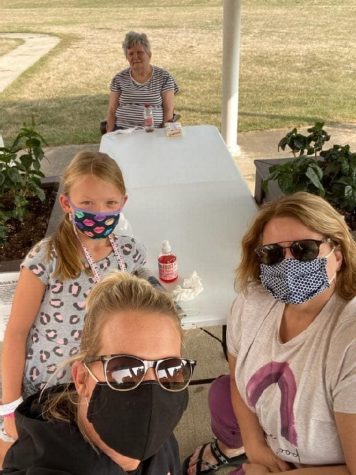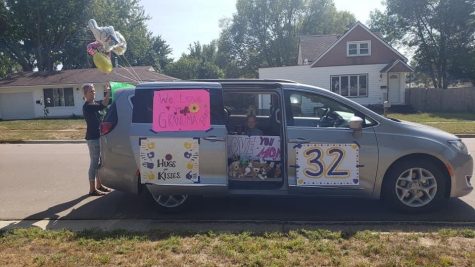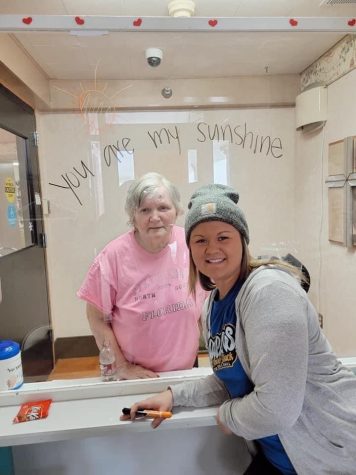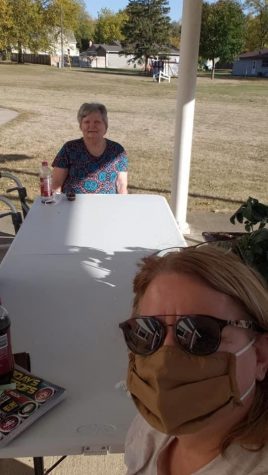COVID-19 deaths reach an all-time high in the U.S.: 500,000
February 25, 2021
Feb. 6, 2020 marked the first confirmed death as a result of COVID-19 in the United States. Roughly a year later, there is still immense devastation and no end in sight.
On Monday, Feb. 20, a shocking milestone was reached; half a million U.S. citizens were confirmed to have died as a direct result of COVID-19 or from complications of the virus.
With continued lock-downs, quarantine precautions, work-from-home regulations, school shutdowns and more, U.S. citizens are desperate for answers. Although the distribution of vaccines has provided a moment of relief, it is not the final step toward the end of the global pandemic. But what is?
The U.S. has steadily been at the forefront of COVID-19 rates and continues to be, despite the downward trend of virus reports. At this rate, numbers have only continued to surpass the expectation of many federal experts and medical professionals.
“The magnitude of it is just horrifying,” said Jeffrey Shaman, professor of environmental health sciences at Columbia University, in an interview with The New York Times.
And Shaman was correct; when diving into the statistics associated with the 500,000 deaths, it becomes an eye-opening experience.
Just recently, COVID-19 became a leading cause of death in the U.S., standing beside heart disease and cancer.
“About one in 670 Americans has died of Covid-19,” said The New York Times.
The disease has killed over 100,000 Americans in the last five weeks, and 400,000 in the 47 weeks before. Native Americans, Hispanics and Black Americans have all experienced a higher rate of COVID-19, than white Americans.
“According to the Centers for Disease Control and Prevention; the death rate for Hispanics was 2.3 times higher than for white Americans. And for Native Americans, it was 2.4 times higher,” said The New York Times.
Not only has the virus affected those across racial lines, but many elders have experienced a greater battle with the disease as well.
“The communal nature of nursing homes and long-term care facilities and the population served (generally older adults often with underlying medical conditions), put those living in nursing homes at increased risk of infection and severe illness from COVID-19,” said the CDC.
Elders in nursing homes have been forced to face the reality of the virus ‘behind bars.’ With little to no contact with the outside world, it has become a devastating sense of containment.
“My mom used to be so outgoing. If she was up and moving, other residents followed her lead,” said Roxanne Miller-Wickre, daughter of Babe Miller, Canton Good Samaritan Nursing Home resident. “But when COVID-19 first hit, they couldn’t leave their rooms for weeks on end. She lost a lot during those months and throughout her sickness. She has gone through physical, occupational, and speech therapies in an attempt to regain what was lost, but it’s just not the same.”
While the elderly are simply being confined in an effort to protect them, it is still a struggle for both family members and friends involved.
“This whole situation has been heartbreaking to watch through a window,” said Miller-Wickre. “I pray that one day soon I can walk with her, take her to DQ for some ice cream, hold her hand, and most of all, share a hug with no barriers between us.”
But age and race are not the only factors that have an effect on the danger of COVID-19; there are many categories of high-risk individuals: cancer patients, the down-syndrome community, asthmatics, pregnant women, diagnosed diabetics, smokers and a great number of our American population are affected by the risks of the virus.
But, no matter your experience with COVID-19, almost every American could say they have been affected by the virus in one way or another. Whether it has created monetary issues, family loss, or mental health problems, there is a common agreement: this pandemic needs to come to an end.
The Pew Research Center discovered that nearly nine-in-ten U.S. adults say their life has changed at least a little as a result of the COVID-19 outbreak, including 44% who say their life has changed in a major way.













